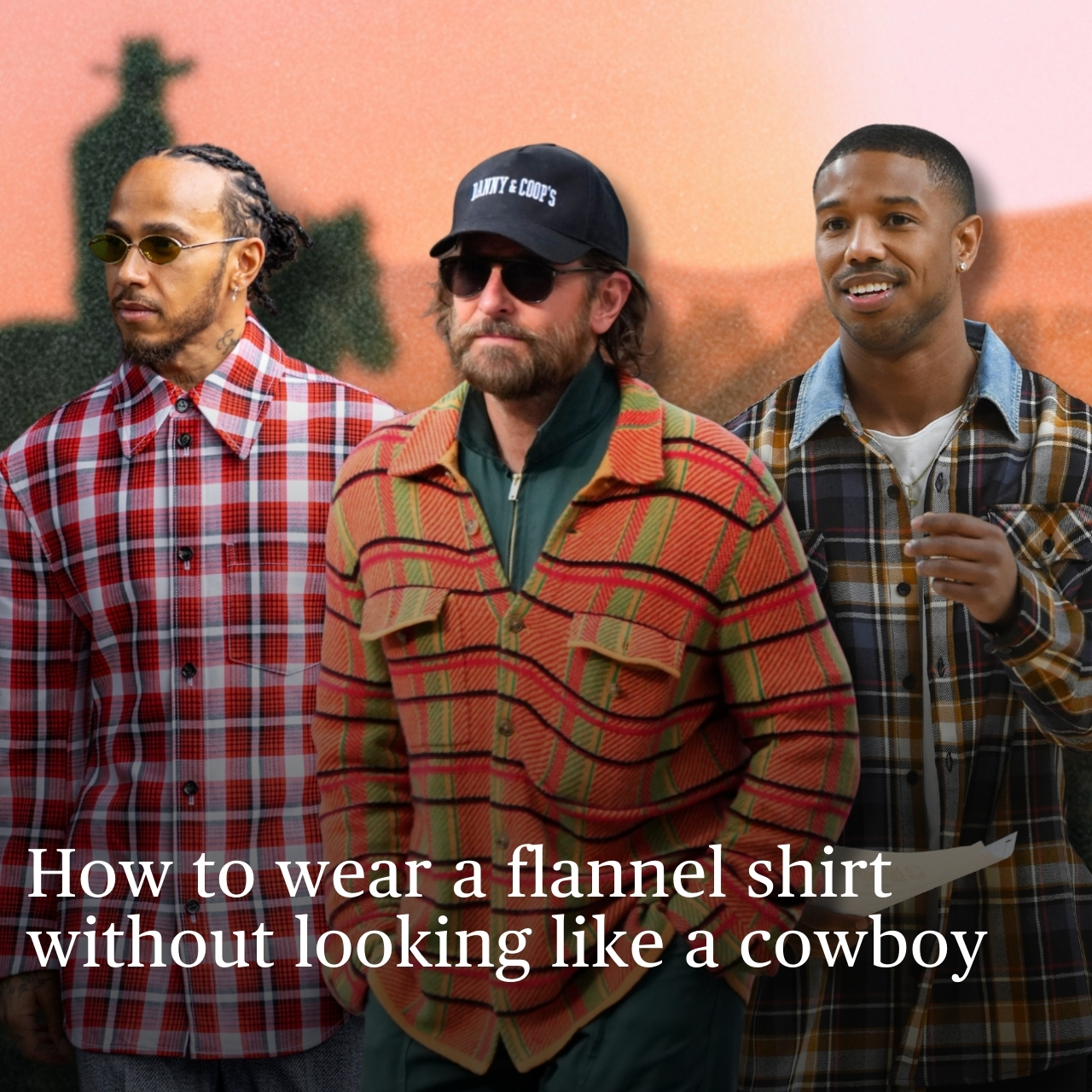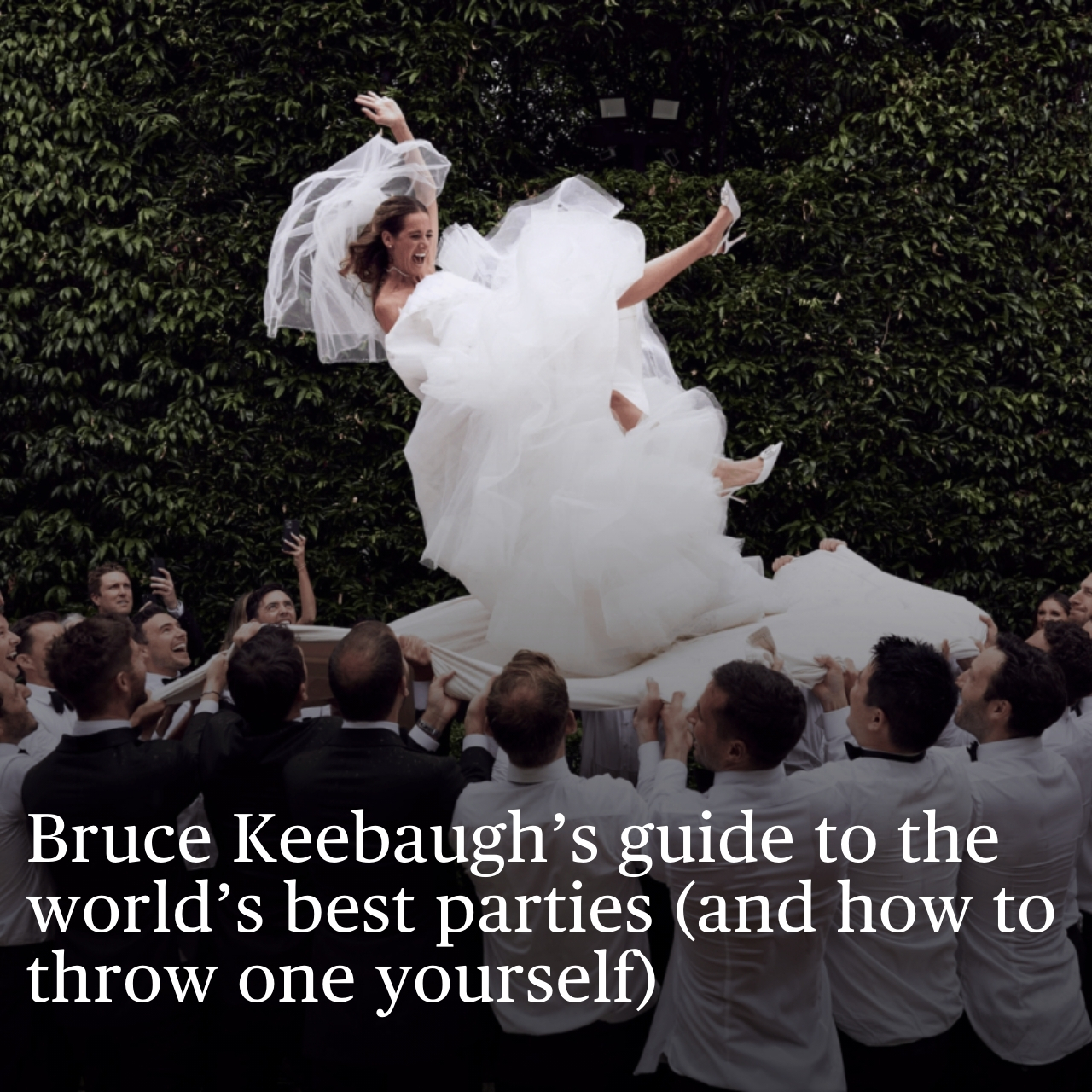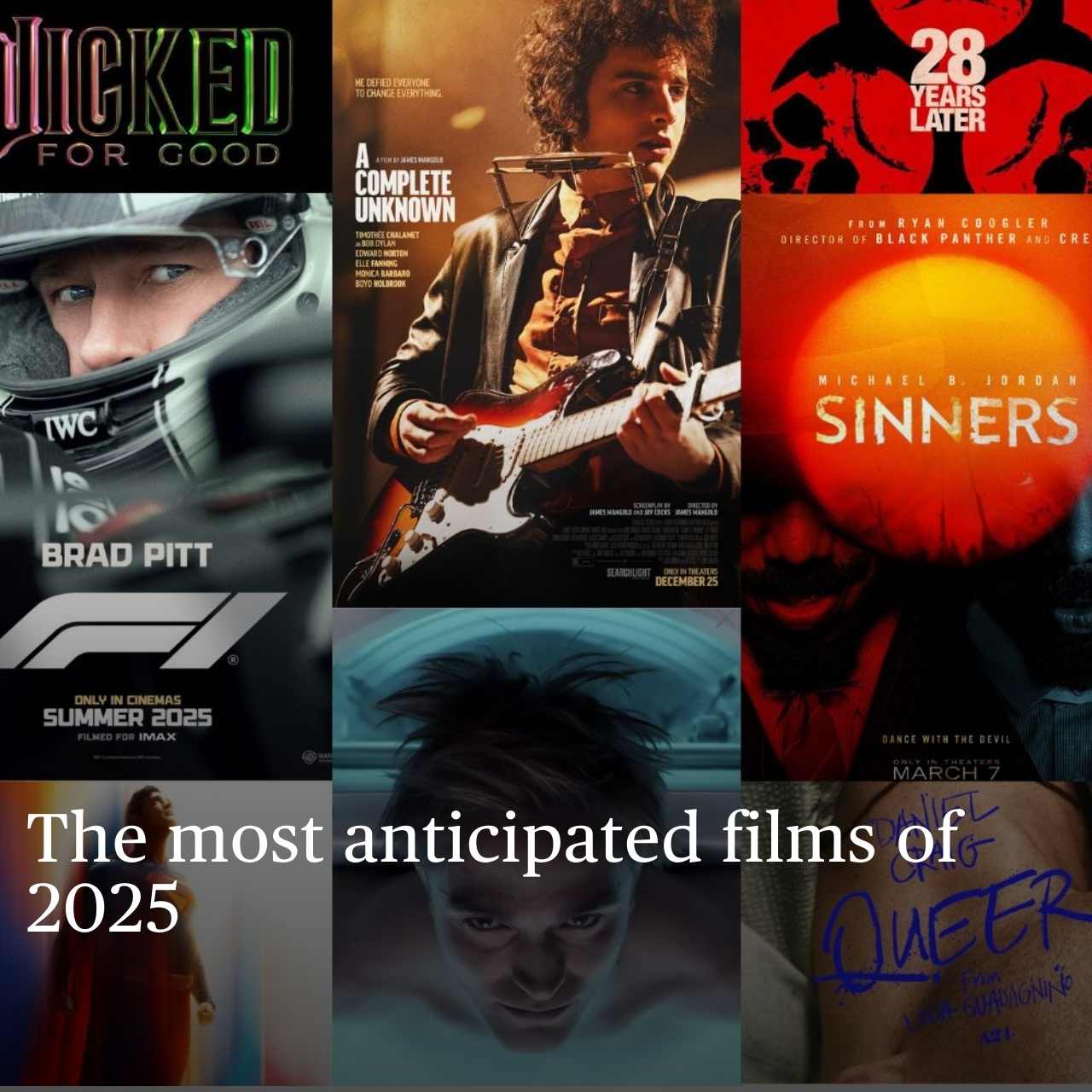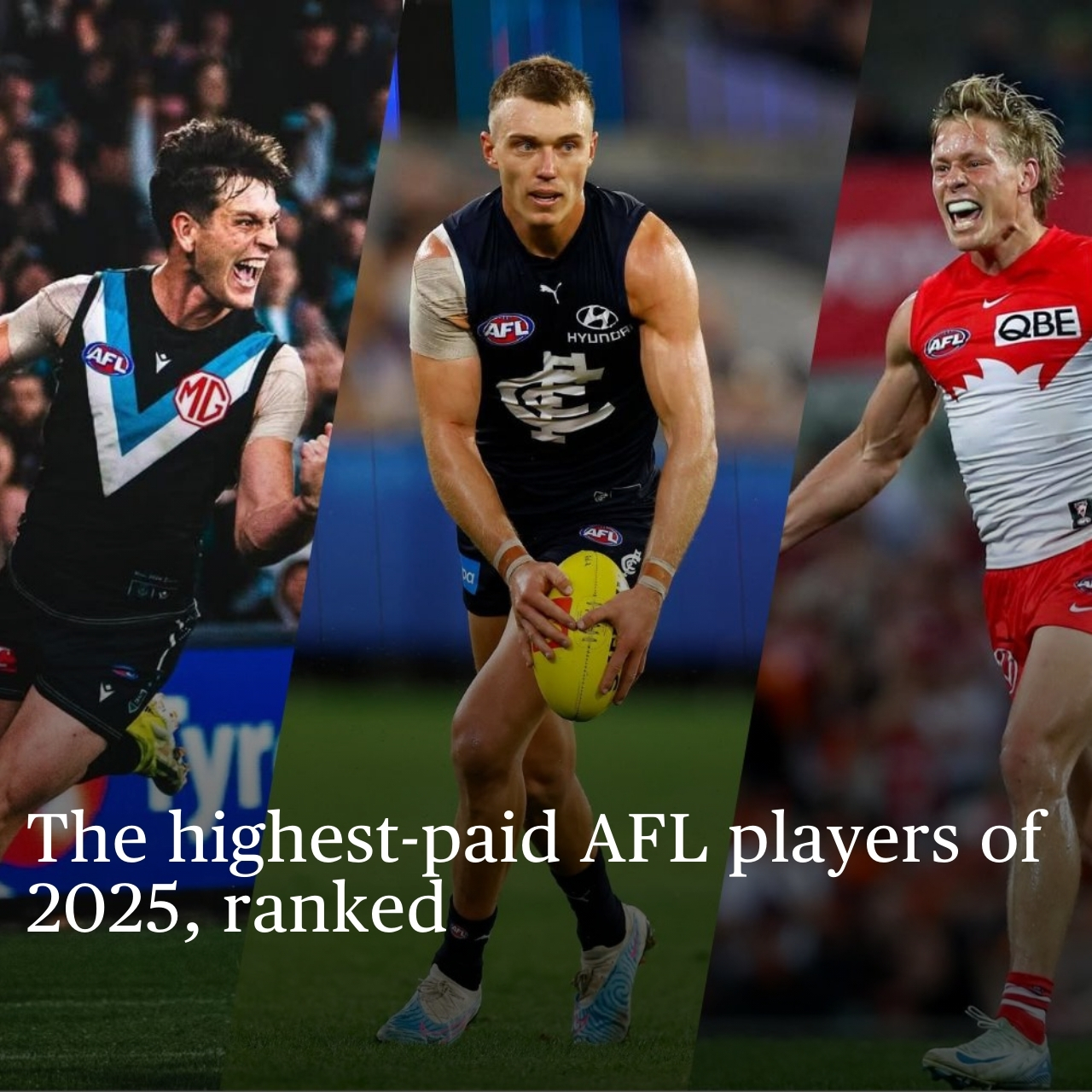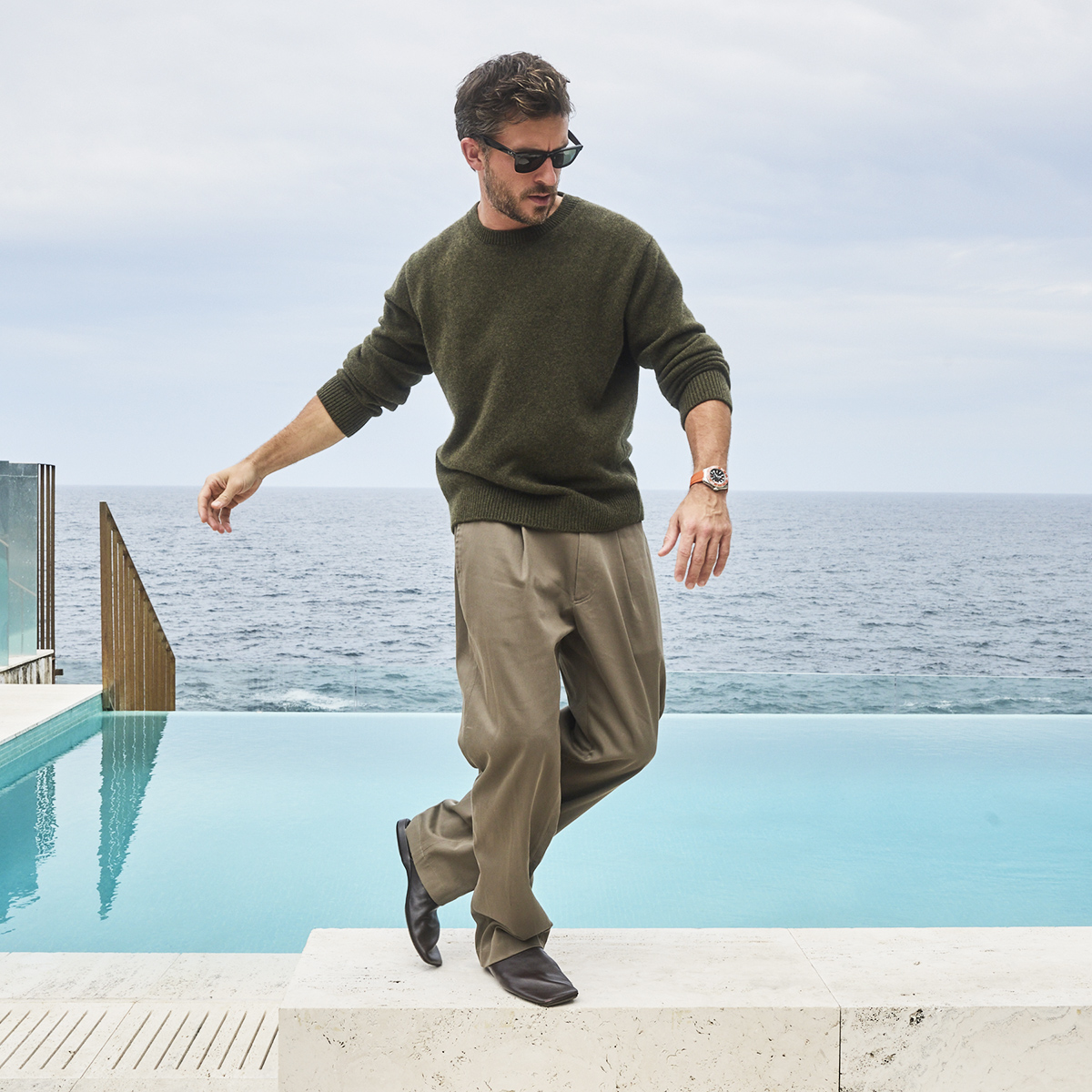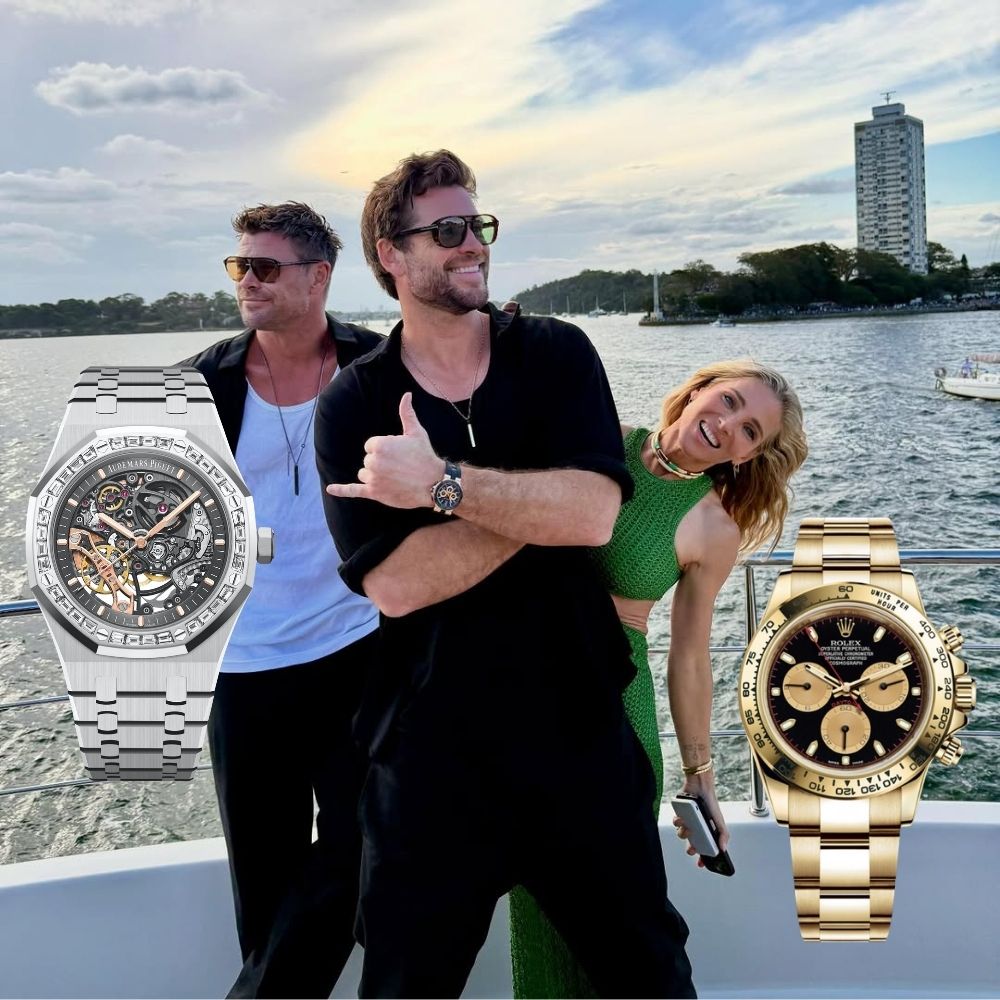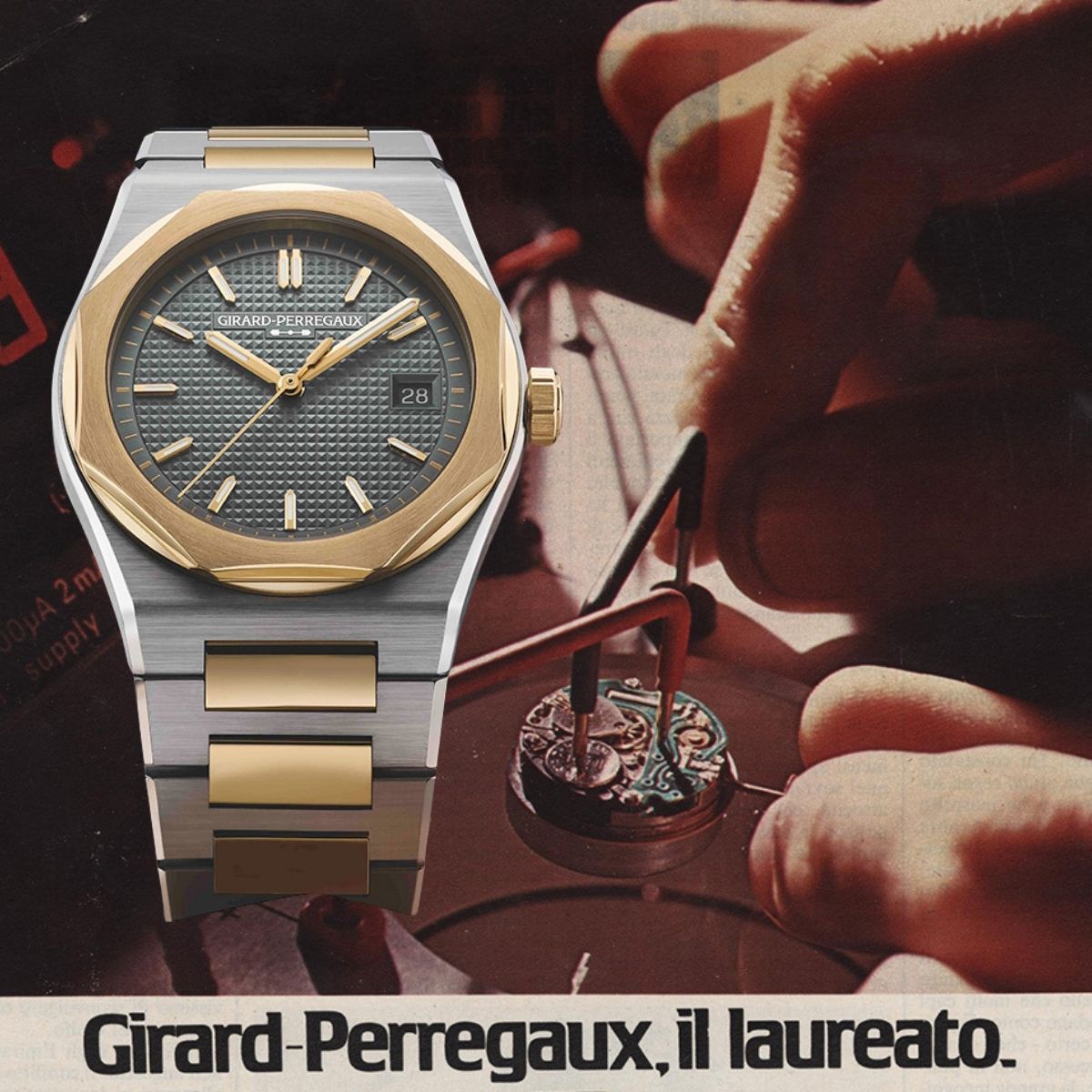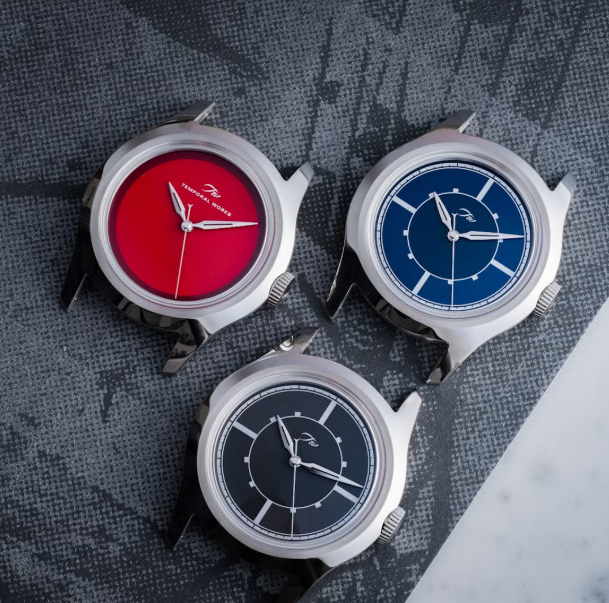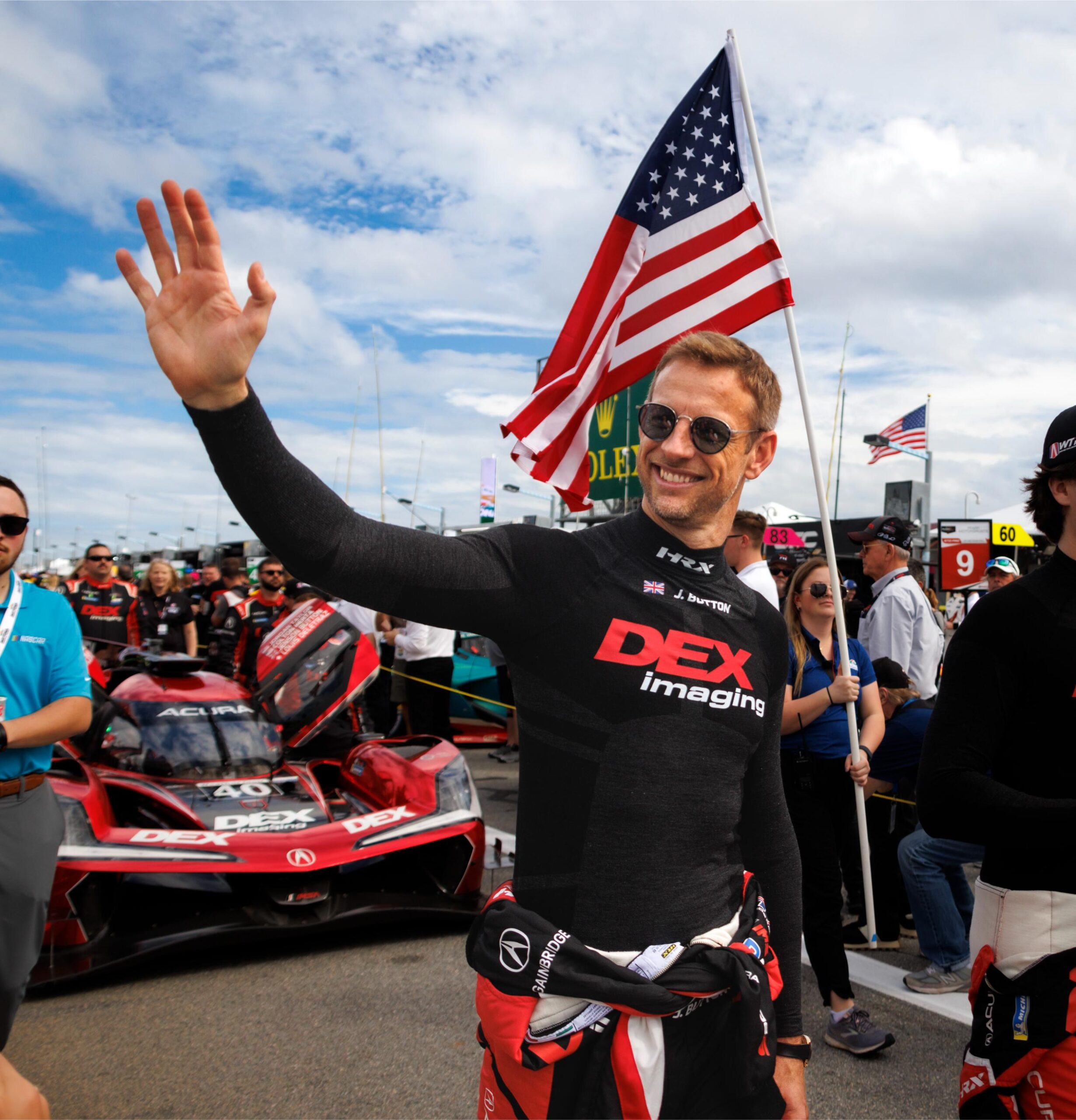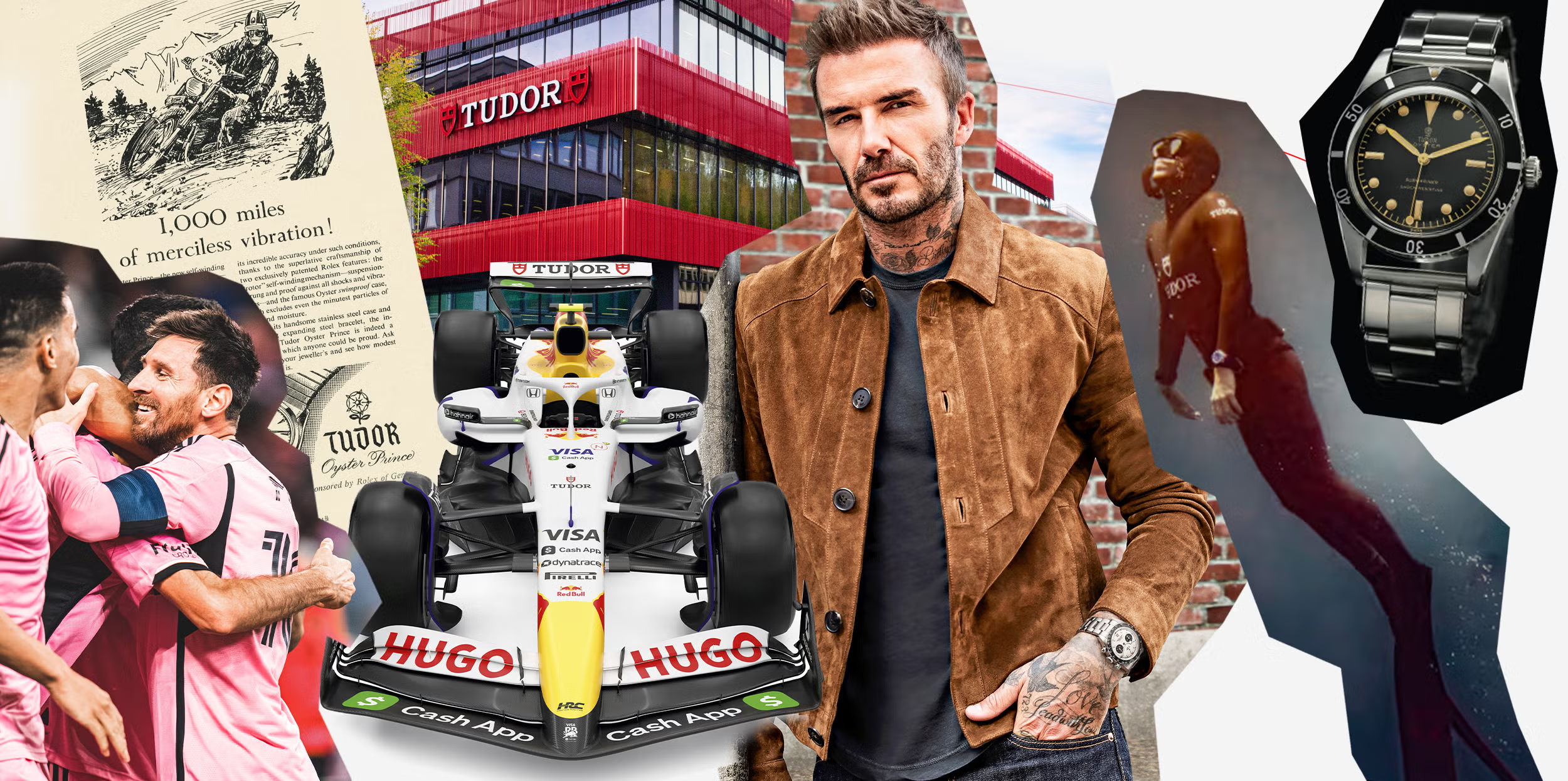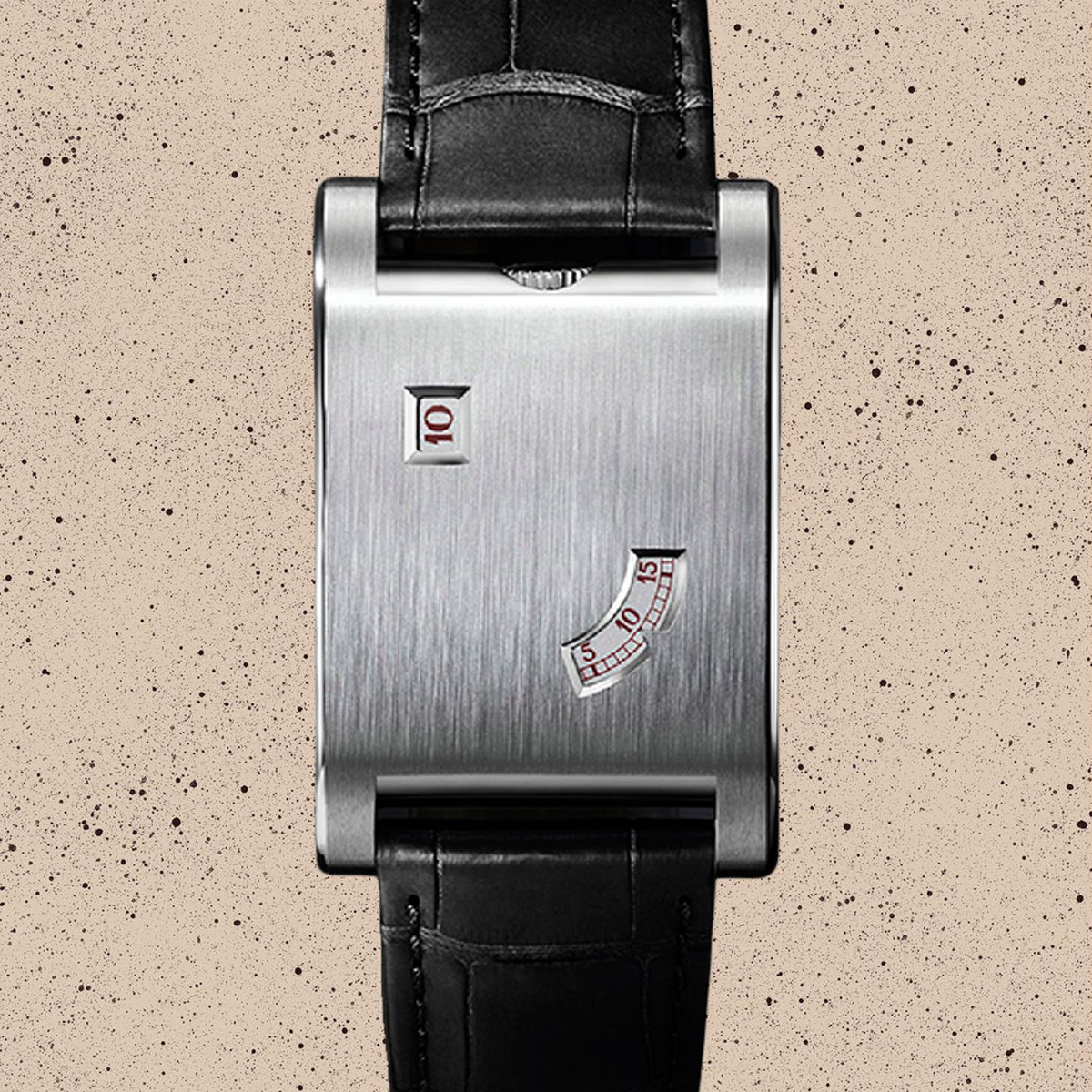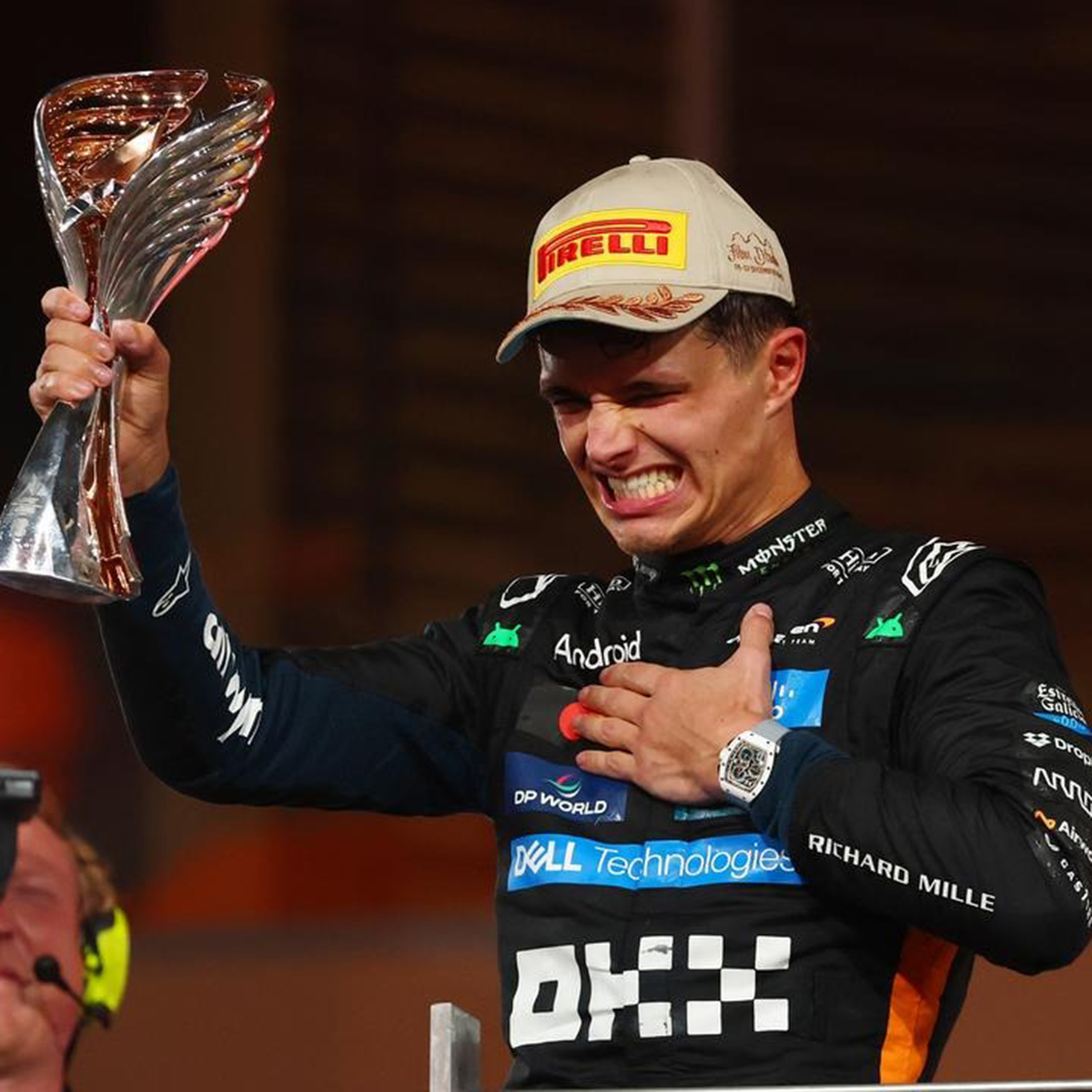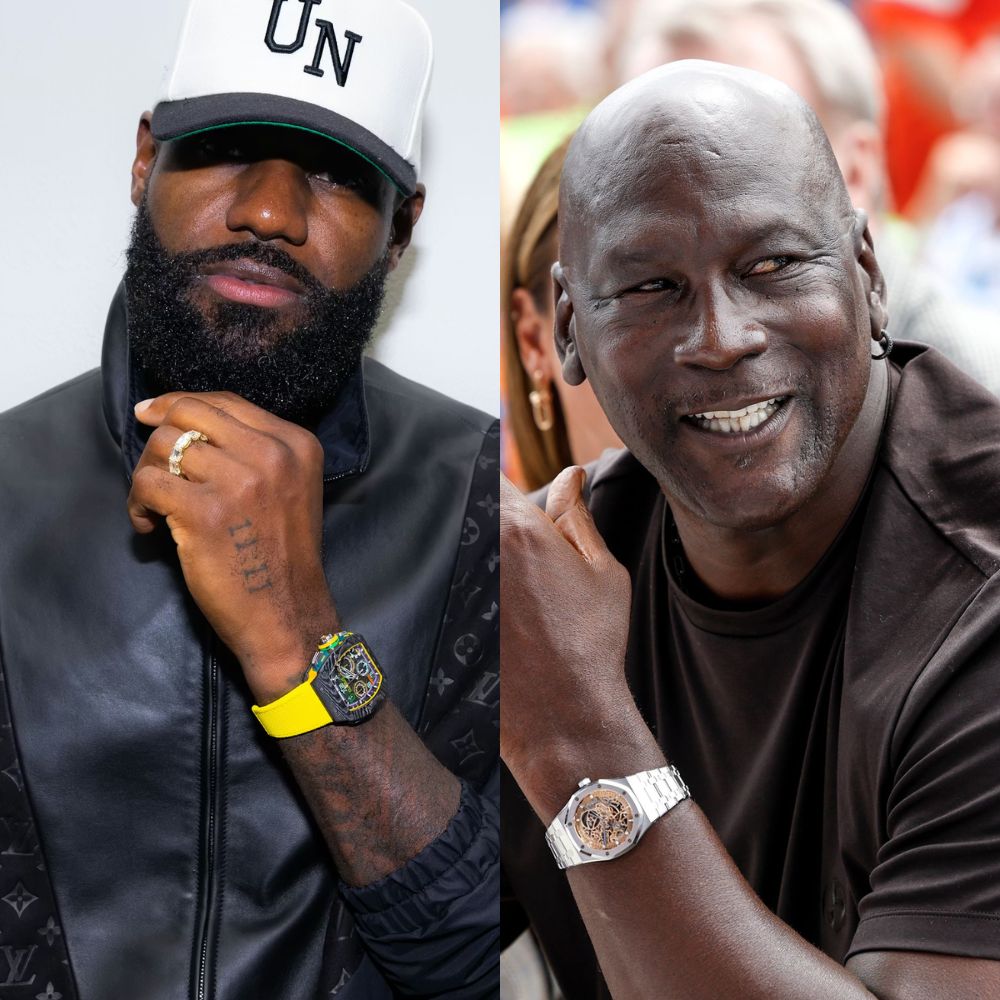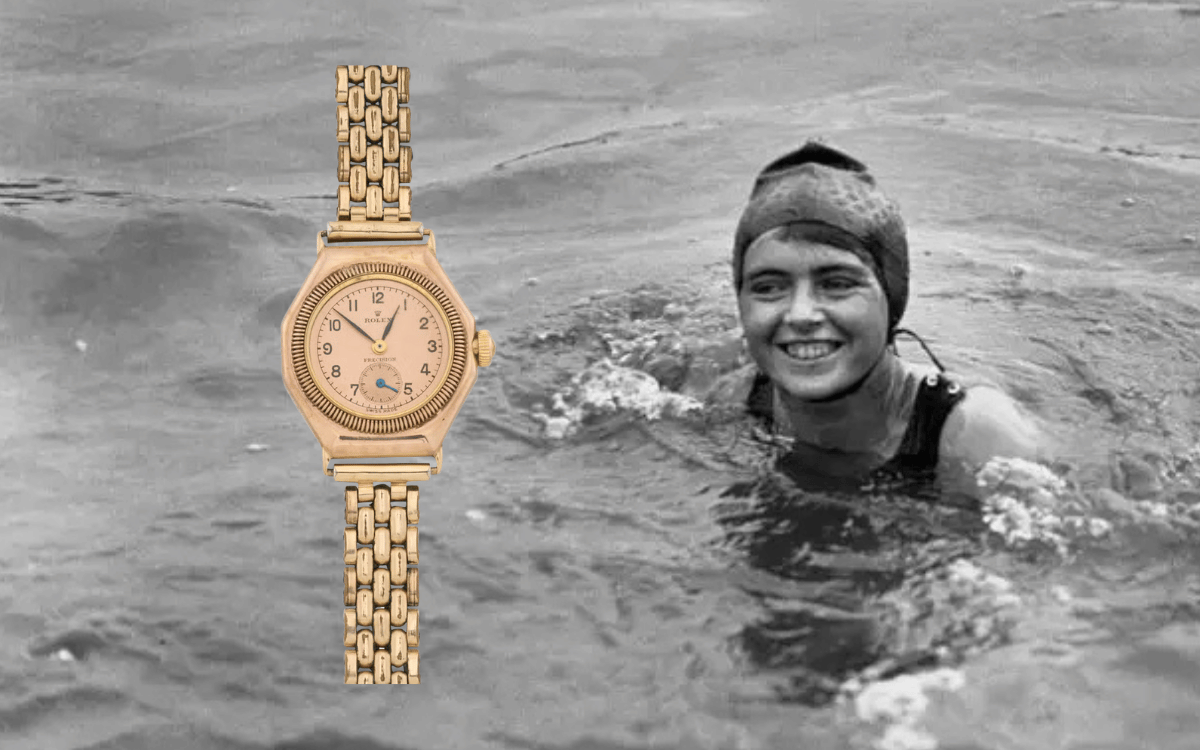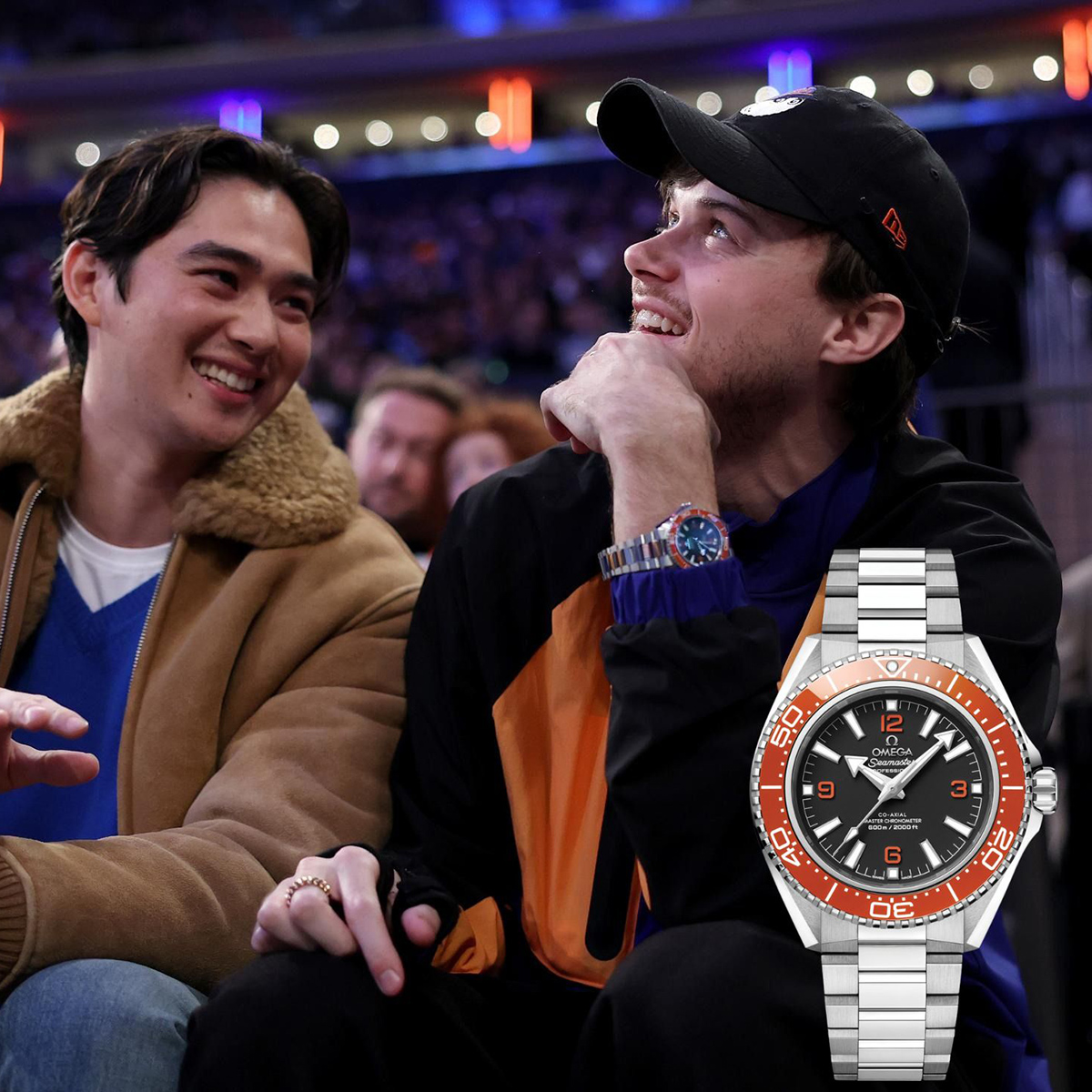The inside story of Brad Pitt’s ‘F1’ watch (and the rest of the racing team’s wristwear)
IWC has a starring role in the $300M blockbuster. This is how the Swiss watchmaker raced to stay ahead of Hollywood's pace
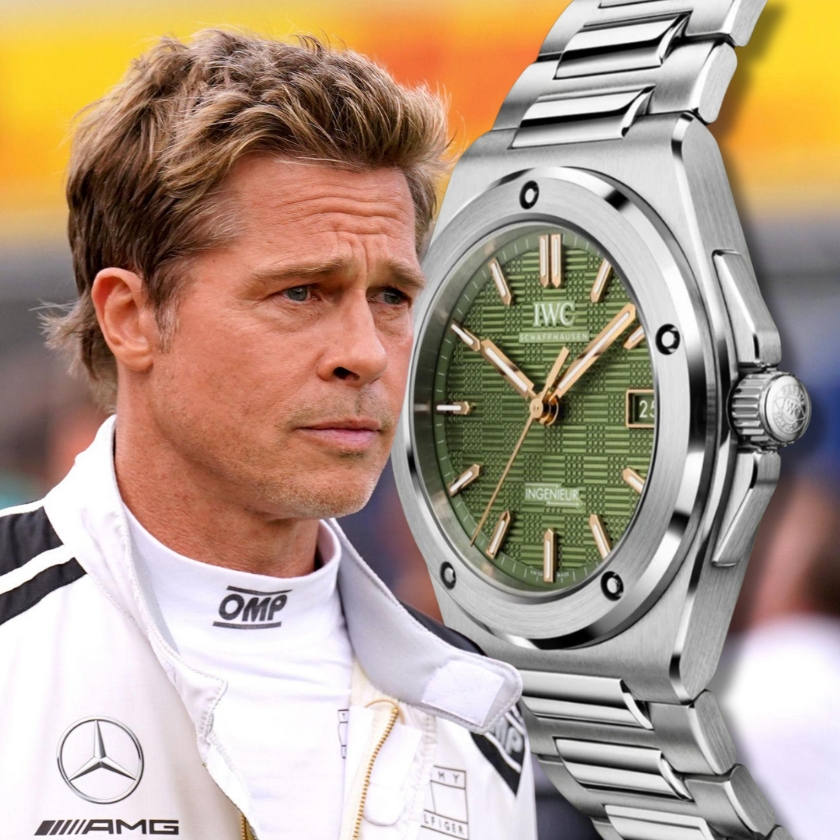
THE FACT THAT Christoph Grainger-Herr has got a lot on becomes apparent the moment our video call starts.
He is attempting to balance his iPhone on a bookshelf inside an empty classroom at his son’s school – with mixed results.
“It’s a disaster day today,” he says. “Apologies.”
It’s a big week for IWC, the Swiss watchmaker renowned for its rugged pilot’s watches and the Ingenieur – the cult 1950s steel tool watch known for its anti-magnetic design, later reimagined as the Ingenieur SL “Jumbo” ref. 1832, by industry design legend Gérald Genta.
Four years of behind-the-scenes work with Hollywood has gone into F1, the Brad Pitt and Damson Idris-fronted $300m motorsport movie for which IWC has undertaken what can reasonably be called a 360-degree partnership.
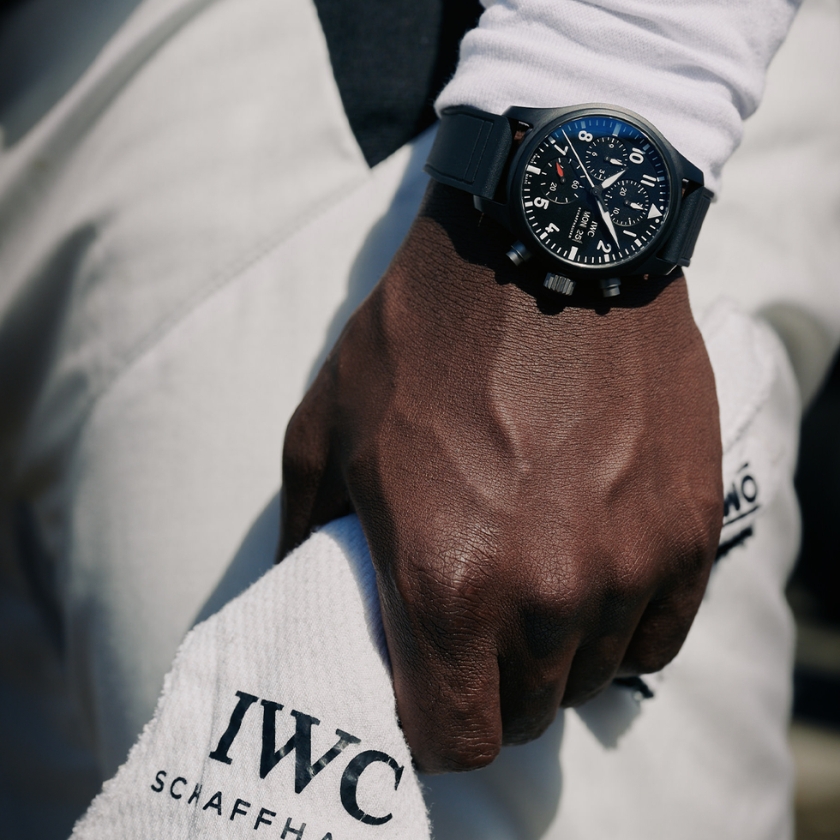
The brand has designed a collection of watches for the fictional APXGP (pronounced “apex”) racing team featured in the film – with the actors wearing them on-screen. In real life, these include a pair of Pilot’s Watch Chronograph APXGP models, a Pilot’s Watch Chronograph Perpetual Calendar and the standout Ingenieur Automatic 40 Limited Edition.
The latter, worn by Brad Pitt’s character Sonny Hayes, features an attractive light green dial with a chequerboard pattern designed to play with the light.
With every watch brand vying for pole position in the post-Drive to Survive motorsport boom, IWC is a seasoned front-runner.
In 2013 it became the official engineering partner of the Mercedes-AMG Petronas Formula One Team – aligning it with one of the great F1 teams, and leading to the development of a run of special edition watches inspired by the materials of motorsport, including carbon fibre and ceramic.
There have been partnerships with prominent F1 drivers – not least Lewis Hamilton, who has helped design watches for the brand.
The combination of director Joseph Kosinski, of Top Gun: Maverick fame (IWC also kitted out that film with “Strike Fighter Tactics Instructor” models), producer Jerry Bruckheimer, the star-wattage of Brad Pitt and strong word-of-mouth (currently 88 per cent “fresh” on Rotten Tomatoes) suggest a full-throttle triumph is around the corner.
And will presumably shift some watches, too.
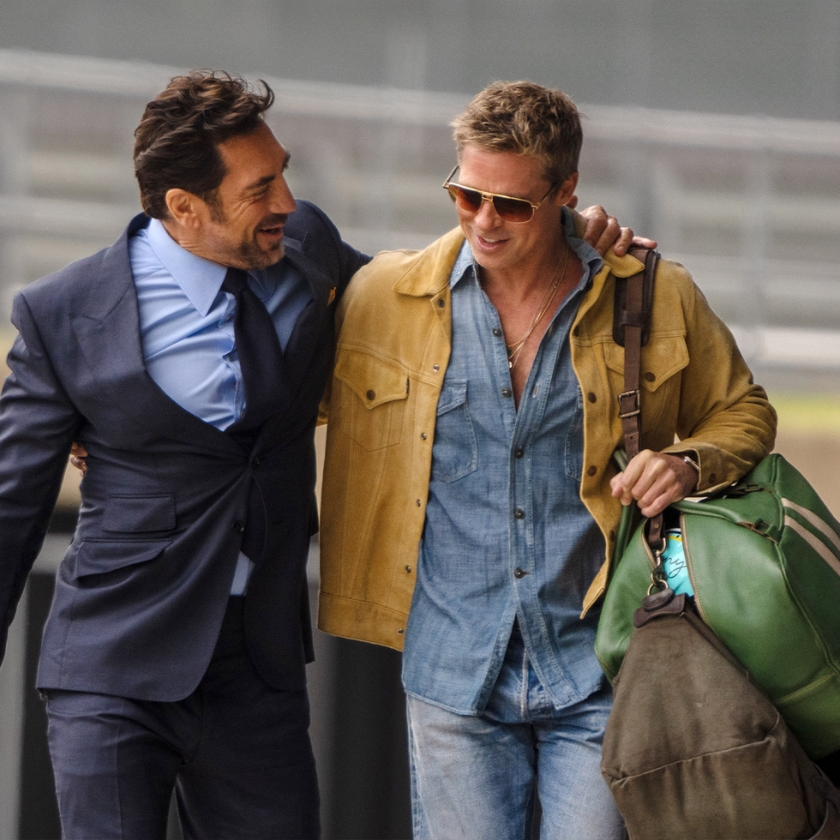
Esquire: As watch collaborations go, this sounds like it was a fun one. What was the starting point?
Christoph Grainger-Herr: It pretty much started straight after Top Gun: Maverick. So, this would have been – what – four years ago. And then obviously the first part of the process is really about all scripting, screenplay writing and setting up the production.
And how did things progress?
It was filmed over two-and-a-half Formula One seasons, with reshoots because of the [2023] writers’ strike. That forced the production to do a non-talent shoot during one season, then come back to a lot of the Grands Prix to film the actual actors with the cars and racing. It had to seamlessly blend into the existing Formula One infrastructure. You couldn’t just say, “Okay, two more shooting days.” You have to say: “This is the scene in Vegas” and go to Vegas when it’s on in October. Then you have five minutes [on the track] between the qualifying session and the next slot to deliver the scene. If you don’t manage, come back next year! Oh my God, pressure.
Did you go on set?
I went a couple of times. The production is crazy. When you’re creating a Formula One team of actors on the grid, the fact is they have more stuff to set up – vans, containers, equipment – than any of the [real] Formula One teams. Because you have the equipment a Formula One team would need, plus all of the filmmaking equipment, cameras and so on– it’s a huge crew. Also, you don’t have a fixed production base like most movies. It’s all out on the road.
So, has the design of these watches existed for all that time?
Yeah, absolutely. And this is always the challenging thing for watchmakers. It was for Top Gun: Maverick, as well. Because you’re projecting several years ahead with watches that you would like to be current – i.e. not look totally out of date – when the movie possibly launches. Top Gun: Maverick was fully in Covid, so that launch got pushed out by a year and a half.
Gosh.
That means you’re constantly trying to have watches ready for production at the last minute – watches that may purely be concepts at the time of discussing the movie. And then you have to try and coordinate your actual watch launch with a movie launch. And if your main launch – i.e. biggest release of the year – is very dependent on the movie, and then the movie gets pushed back – what do you do? I think we saw a couple of brands got caught out by that with Top Gun: Maverick – there was merchandise in stores a year and a half before the movie, which obviously fell completely flat because it’s totally disconnected.

That’s not ideal.
So, this bit is tricky. Then there’s the fact that Hollywood works to completely different timelines compared to the watch industry. If I say to my R&D production people, “I’d like a new watch,” they say, “Okay, see you in three years.” If Hollywood wants a new watch, they mean three days.
I’m sorry I said this project sounded fun. It sounds like a nightmare.
It wasn’t a nightmare.
Did you get any insight into the characters and what you were making watches for?
Yeah, absolutely. You base it off the script, and you try and come to your best conclusion about how those characters will be displayed on the screen. But it’s quite hard – their exact character profile is not that clear yet.
Talk us through the watch worn by Brad Pitt’s character, Sonny Hayes.
We had a conversation very early on in the process, where Brad said to us: “Look, this watch has been handed down to me by my dad [in the story]. I see this to be like a neo-vintage piece. It’s battered and used – it’s not a gleaming new watch.” And then you go from there. And he was quite specific on wanting a vintage 1832 from 1976 with some customisation. So, we embarked on that process. That’s quite fun. Because he said, “Look, I love the watch, but I’d like it to be half as thick as the original.” So, that’s me going to the R&D team and saying, “Can we divide it by two?” That caused all sorts of engineering challenges.
Why was that, Chris? What was his thinking?
I mean, he was absolutely right. When you look at the original Ingenieur [from 1955], it was a watch marketed to engineers. Therefore, it had a magnetic protection cage made from soft iron inside the case. That meant that the case back was bulging out from the case side profile by another few millimetres, so that it doesn’t sit flat on the wrist. Brad rightly pointed out that was a bit of an ergonomic limitation. So it was: “How can we bring this bulge down?” In the end, we took out the movement, we took out the soft iron inner cage and put in a 3D-printed polymer movement holder with a flat back into the case. That’s obviously compromising on waterproofing and magnetic field protection, but it makes the watch a lot more wearable. Sometimes these are the kinds of “screen compromises” we have to make.
What’s the significance of the watch worn by Damson Idris’ character, Joshua Pearce? I’ve read that the model –the Pilot’s Watch Performance Chronograph 41 – reflects a “rising star” who embodies “speed”. Can you explain what that means?
So, there’s a couple of things here. When we saw Damson’s character in the script, it was clear that this had to be a dynamic watch. It needed to be a hero piece. Because ultimately, when you structure these [film] contracts, there’s always this point about some detailed close-up exposure of a watch in the movie, for a certain amount of time. So, you’re typically trying for that to be your “marketing piece” – the one from the current collection that you want to feature. For Top Gun: Maverick it turned out differently. It ended up being a handheld stopwatch – the white ceramic Pilot’s Watch Chronograph Top Gun Edition “SFTI” is used by characters including Tom Cruise’s Maverick.
Interesting!
So, what Damson’s character represented – that was one factor. Then finding out the APXGP team colours were going to be black and gold made our job easier. We said, “We can do [that colour scheme] on the Performance Chronograph.” We’ll create a gold version with a black dial that will look good on Damson and give the right sort of dynamic feel.”
But then the co-sponsors’ livery was the most nerve-wracking part of the process. I knew from Joe Kosinski the team outfits and garages were going to be quite “Apple-y”, very white – that suited us. Then it depended on the other sponsors. Maybe you saw in the trailer the Porsche livery, on the Le Mans car – very colourful. We didn’t really want a lilac or mint green car.
So it was quite a relief when they said, “We’re going to go black and gold.” That was, like, “Eureka!” It’s a beautiful livery. Everyone knows what it’s historically based on – Team Lotus’ classic John Player Special livery, from the 1970s. It just makes a lot of sense.
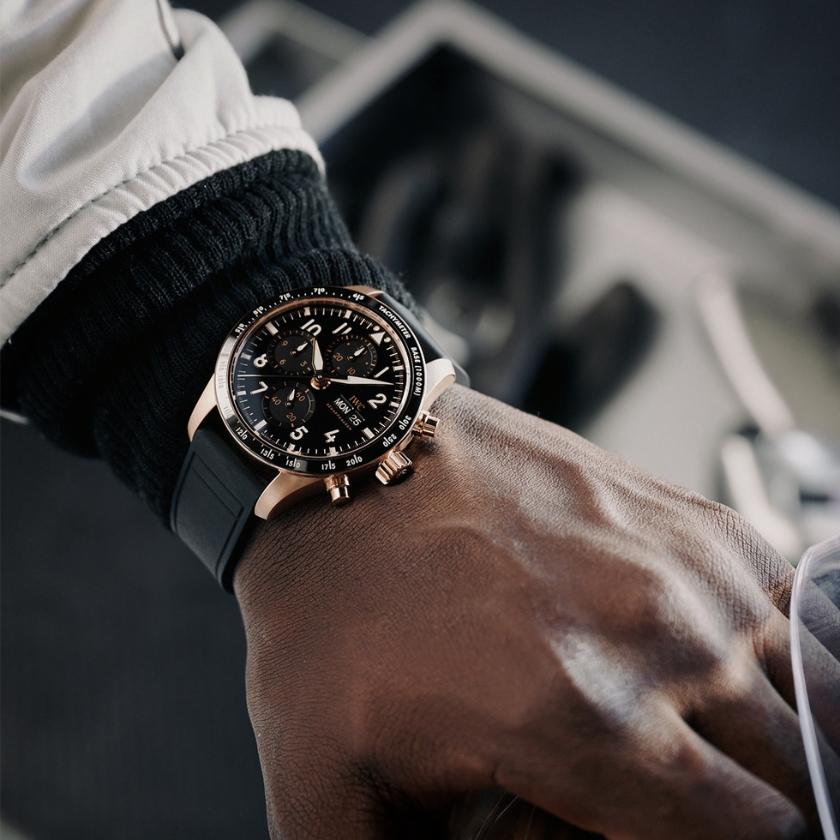
You’ve put a spectrum of watches in this movie. Chronographs, Ingenieurs, perpetual calendars . . . It’s a lot.
If you include the background pieces, we delivered 90-odd watches to the production. We have a whole layering of watches. Damson Idris has the gold piece. Then we have the APXGP team chronographs – 41mm and 43mm in steel. Also, the current green-dialled Ingenieur. Javier Bardem’s character sporting a Big Pilot on his wrist. Then all the Ceratniums, the Pilot’s 36 and the Pilot’s chronographs throughout the team, the pit crew, the team principal, and others. A wide range with various degrees of visibility. And then the wall clocks in the garage as well, which is the last piece of the puzzle.
There’s also IWC branding on the drivers’ suits, helmets, gloves.
Probably the invention we’re proudest of was the chin position for the logo, just below the visor.
Go on.
When you think back to Formula One a few years ago, IWC invented the idea of printing a watch on the driver’s gloves. They brandished a graphic of the IWC Big Pilot on the left-hand gloves of drivers – visible in every in-car shot – as part of sponsorship and marketing. This became relevant as soon as F1 introduced cockpit view cameras. Suddenly, with the driver steering, you could see the visibility of the watches. It’s since been copied by basically every Formula One team with watch partners.
And why is that such a good position?
We understood that the same way Top Gun uses Sony camera technology to get realistic facial reactions while doing manoeuvres, that’s what’s coming to racing films. Driving sequences used to be CGI or stunt drivers – the drivers’ close-ups done with somebody in a camera rig, shaken, with a hairdryer and water.
Perfect!
Knowing how Top Gun was filmed, it was obvious Joe Kosinski was going to put the drivers in cars and get real facial reactions. That means clear visors, or you wouldn’t see eyes or reactions. Then someone on my team came up with branding the chin, just below the visor. Bingo – that position you see an awful lot.
We can feel the hype around F1 building. Is it already selling you watches?
We can’t comment on the commercial side of things, but you can clearly see that the film is already generating a ton of buzz, and we can feel that. It’s also really interesting how this unique combination of Apple Original Films and Warner Brothers and Bruckheimer Productions really turbocharges the visibility it generates.
What do you mean?
This is the first time a movie promotion has been fully integrated into iOS content and hardware. We’ve seen the extreme visibility via Apple TV that the trailers have generated. You have the haptic trailer – if you haven’t tried it that’s quite fun. Apple Maps did a takeover of the Monaco Grand Prix, where all of the APXGP cars were driving around and on Apple Maps. As you navigate through Monaco, you have the huge push of the Atlantic Records soundtrack on iTunes. Apple opened its Keynote recently with an APX movie. That integration between the hardware and content system that is Apple and the movie studio and everything around it – it really generates a unique amount of visibility for a summer blockbuster like this one. We haven’t ever really experienced anything like it.
When you put it like that it does sound a bit more 21st century than just sticking your brand name round the racetrack.
This is exactly it. Back at the beginning [of this project], I tried to figure out: what is actually happening here? Because, typically, when you look at the IP at an entertainment company – Disney, or anybody –it starts with a feature-length movie. Then there’s the spin-offs: streaming TV series, merchandising and, ultimately, hotels and cruise ships and all the rest of it.
Okay.
But when we think about Liberty Media [the US company with a significant stake in motorsport] and Formula One, they kind of have done it the other way around. Because Formula One is really a travelling marketing circus. It’s more like Cirque du Soleil. It comes to different cities, and you can go and experience it.
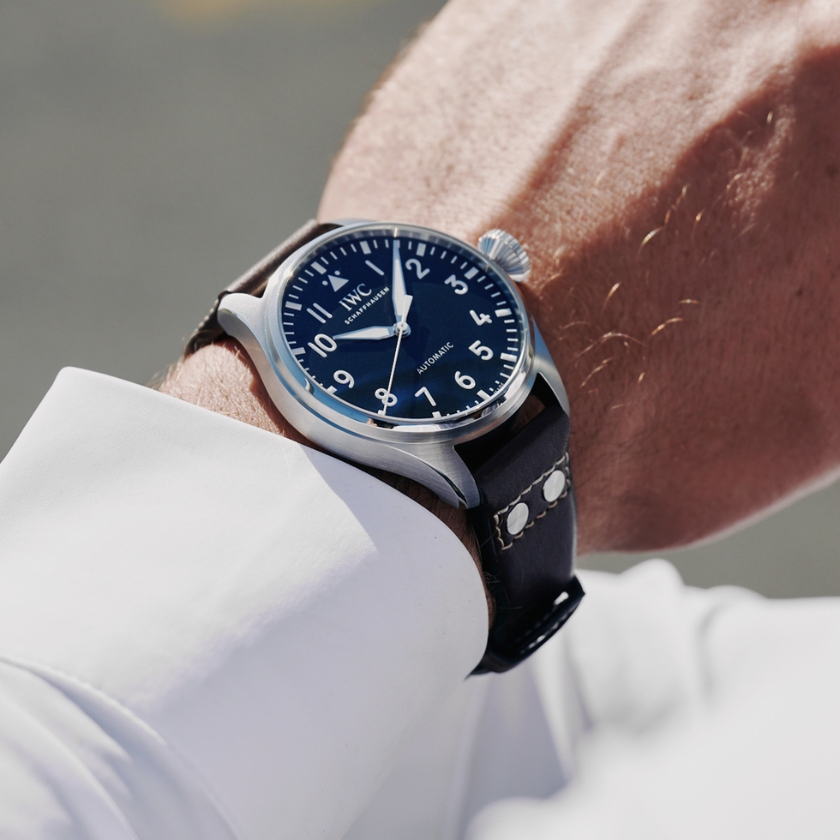
It is on TV, too.
It’s true it’s traditionally had linear broadcast TV as a spin-off. But that was almost a limiting factor. Because you couldn’t really go behind the scenes of these cars going around the track. It wasn’t overly exciting. Then during Covid, they invented Drive to Survive.
And everything went nuts.
Yes. Because it suddenly brought the human story to the Formula One sport – accessible not just to the few VIPs in the paddock, but to billions of people around the globe. And so now they go into Hollywood, and into dramatised storytelling that’s inserted into F1. That’s now the top-level IP.
I see what you mean.
And I’m thinking, “Okay, and then Apple comes in. But why are they doing this? Why like this?” And I think the interesting thing about that is that by bringing Hollywood in to capture F1, it potentially gives you a completely different and new way of bringing the adrenaline, the excitement of F1 racing onto a screen. Now this may just be me speculating. But I think this may be a very important precursor for how the content of Formula One may be consumed in the future.
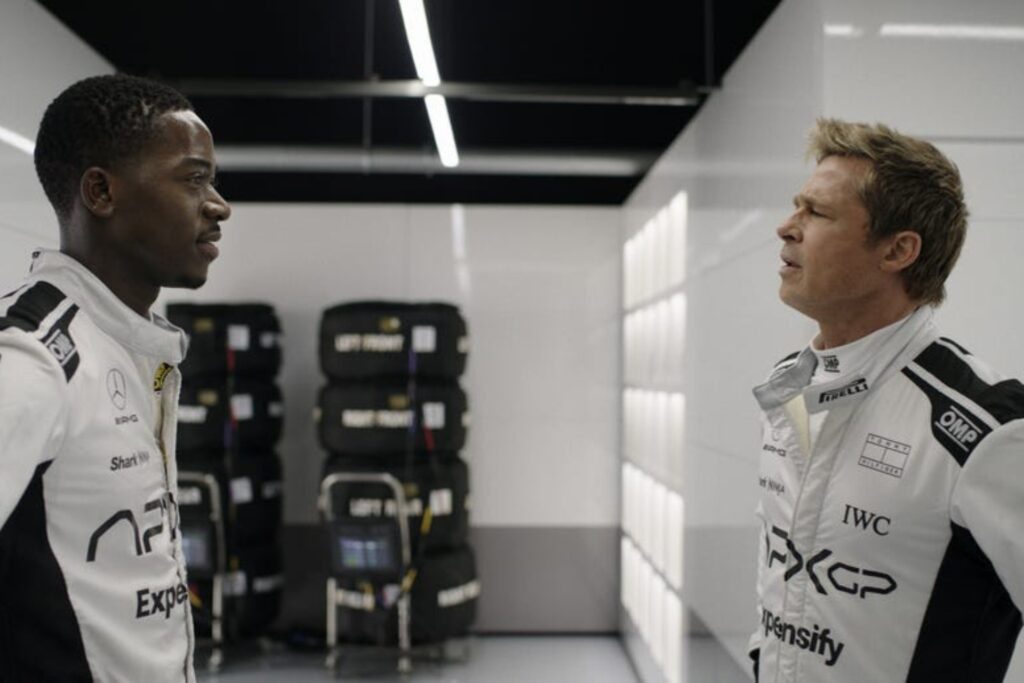
You must be chuffed you signed on back in, when? 2021?
Look, movies – it’s such a speculative business, right? You really do not know at the beginning. You’ve got the big-name actors. You’ve got Jerry Bruckheimer. It sounds good, but there’s never any insurance policy that says, “OK, this one’s going to be great.” It’s the same thing as when we extended our Formula One contract with the Mercedes-AMG Petronas Formula One Team [IWC first partnered with the UK team in 2013]. At the time, a lot of people said to me, “Are you sure?” I mean, Formula One was just middle-aged European men watching this stuff! And then everything that happened during Covid and after – it turned out very differently.
It did!
The move that Liberty Media made in bringing everyone to the masses really changed the game. It became a major lifestyle, branding and taste-making platform. And now you have the youngest and biggest F1 audience ever. You have full recognition and awareness in the US. You have so many women watching Formula One, following it all over the world. Here in my son’s school class, all the girls are following and loving one or other Formula One driver. It used to be Boyzone back in the day – now it seems to be Oscar Piastri.
Ha ha.
We really couldn’t have foreseen that back in 2018 when we – when we extended the contract to the team. Sometimes you have to have the right feeling and instinct, and you have to hope things work out. And then it’s a bit of luck as well.
Creating watches for fictional characters is an intriguing gig.
Yeah, it is intriguing, for sure. There’s also the basic fact that movie and television is very different from real life. At IWC, we don’t typically design our products to be recognisable from six metres across the table. When I look at the Ingenieur design, or the Pilot’s chronograph, those are watches that are graphically and proportionally optimised to look good at a distance of 45 centimetres.
Is that not the case with all watches?
Some other watches – they’re really designed for long-distance viewing. They’re very unbalanced from a closer perspective, but as you look at them from further away, they become very recognisable because the balance or the proportions are over-accentuated. Or they’re very shiny! That’s always a way to impress others.
Okay.
But when you’re on TV or in the movies, the on-screen recognisability means you must exaggerate all sorts of features for that to have any impact at all.
Can you give us an example?
I remember when I stuck our very first logo branding onto the Formula One car at another GP in 2018, or thereabouts. You know, I thought it looked great on the car. When I watched it on TV, you couldn’t see it. This is when I realised: OK, you have to make everything much fatter so that, in the TV image, it looks normal again. And that is true for the movies. The extreme example was Aquaman. We made a special Aquatimer for [2018 Jason Momoa movie] Aquaman that had an LED-illuminated, oversized logo on it that would allow us to have this very exaggerated presence on the wrist. It looks hideous in real life. But then, on screen, it kind of works.
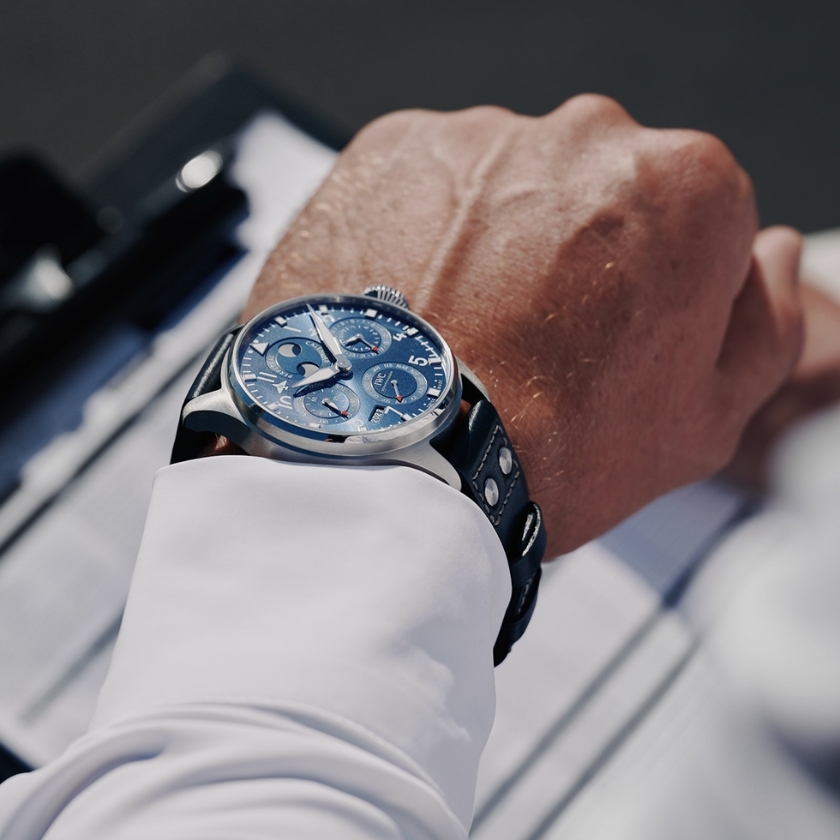
Will IWC continue to work with Hollywood?
Ha, it’s like a marathon, right? Or giving birth. You have mixed feelings afterwards. But then, two minutes later you think: “You know what? Why not?” Absolutely. I think we have to think about the type of filmmaking that we want to continue to support.
Are you thinking of something specific?
Very first day of Top Gun: Maverick they were shooting the canyon scene of Tom Cruise flying low in the canyons. And I remember when they brought back the raw footage at the end of the shooting day, and they showed it to us, that really is 98 per cent of what you see in the cinema. Yes, there’s a bit of colour grading and some soundtrack, but what they shot is what you see. And that gives it a sense of reality and a sense of immersion that I don’t think you can achieve with green screen or CGI films.
Is Brad Pitt as big a watch fan as he seems?
You can see that with all that you see him wearing on social media. I think yes, he loves his neo-vintage. He’s a passionate vintage watch collector, and he absolutely knows what he’s talking about. I was impressed. There’s some people like Ed Sheeran, there’s John Mayer, there’s Brad, you know – there’s some people in the entertainment business who really are fairly hardcore watch people. And that, of course, also gives an interesting dimension to our work when we get to collaborate.
F1 is up against the new Jurassic World. Which one is your money on?
I mean, Jurassic has had a bit of a run! They’ve not all been of a similar level of quality. But also I’m biased because I built a boutique for [the first] Jurassic World.
I didn’t know that.
Back in 2015, the producer was an IWC fan and they had built this shopping mall arcade [‘Main Street’, a promenade of shops and restaurants that gets damaged in a three-way dinosaur skirmish]. And he said, “I’m really interested to have an IWC boutique. You just have to put everything together and we’ll send a cargo plane, we’ll pick it up, and we’ll take it to [film location] New Orleans, and we’ll build the thing.” It was a huge outdoor set. From the beginning I said, “I think I’ll have to come.” That worked out beautifully!
Good luck with the movie, Chris.
Thanks very much.
This story originally appeared on Esquire UK.
Related:
Up close and personal with the new IWC Ingenieur collection
Director Joseph Kosinski on balancing authenticity and entertainment in ‘F1’




